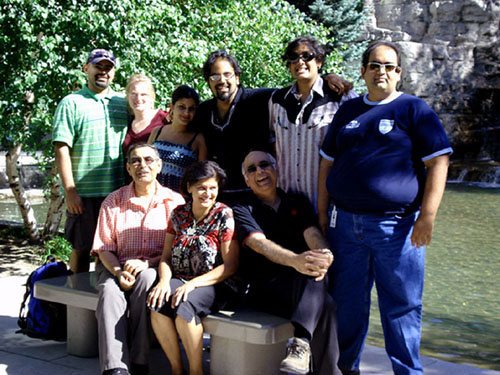Trinidad and Tobago received Foreign Direct Investment (FDI) of US$2.336 billion in 2012, representing an absolute change of US$963 million over 2011 and a growth of 70 per cent over 2011.
FDI in 2010 was US$549 and US$1.831 billion in 2011, according to statistics from ECLAC, The Economic Commission for Latin America and the Caribbean.
According to the report, which was released in Chile earlier this week, Latin America and the Caribbean received a record US$173.361 billion dollars of foreign direct investment (FDI), despite shrinking FDI flows worldwide. That's an increase of 6.7 per cent over 2011
The ECLAC report - titled Foreign Direct Investment in Latin America and the Caribbean 2012 - credited the positive economic news to the region's steady economic growth, high prices for raw materials and the impressive returns on investments related to natural resource exploitation.
ECLAC predicted that this year's FDI inflows to the region will range between a fall of three per cent and a rise of seven per cent.
The ECLAC report - titled Foreign Direct Investment in Latin America and the Caribbean 2012 - credited the positive economic news to the region's steady economic growth, high prices for raw materials and the impressive returns on investments related to natural resource exploitation.
ECLAC predicted that this year's FDI inflows to the region will range between a fall of three per cent and a rise of seven per cent.
The report said FDI was increasingly focused on the exploitation of natural resources, particularly in South America. In addition, the profits of transnational enterprises operating in Latin America and the Caribbean (also known as FID income) grew fivefold in nine years, rising from US$20.425 billion in 2002 to US$113.067 billion in 2011.
ECLAC said the dramatic surge in these profits tends to neutralize the positive effect of FDI inflows on the balance of payments.
Brazil experienced a decrease of two per cent in 2012 over the previous year but still remained the main recipient of FDI, with other top performers in Latin America being Peru (US$12.240 billion) and Chile (US$30.323 billion), making Chile the second largest recipient of FDI.
Brazil experienced a decrease of two per cent in 2012 over the previous year but still remained the main recipient of FDI, with other top performers in Latin America being Peru (US$12.240 billion) and Chile (US$30.323 billion), making Chile the second largest recipient of FDI.
FDI inflows to the Caribbean rose for the third year in a row, but failed to reach the record levels of 2008. The main recipient was the Dominican Republic, with inflows swelling by 59% in 2012.
United States and European Union countries remain the main investors in Latin America and the Caribbean, with Canada and Japan also making significant contributions.
United States and European Union countries remain the main investors in Latin America and the Caribbean, with Canada and Japan also making significant contributions.
The report concludes "It is therefore increasingly necessary to tap the region's advantages as an FDI destination to improve the countries' production matrices.
This could be achieved by making greater efforts to channel part of the profits from transnationals into funds for production development and by pursuing initiatives to direct FDI towards sectors which the countries view as priorities".




No comments:
Post a Comment